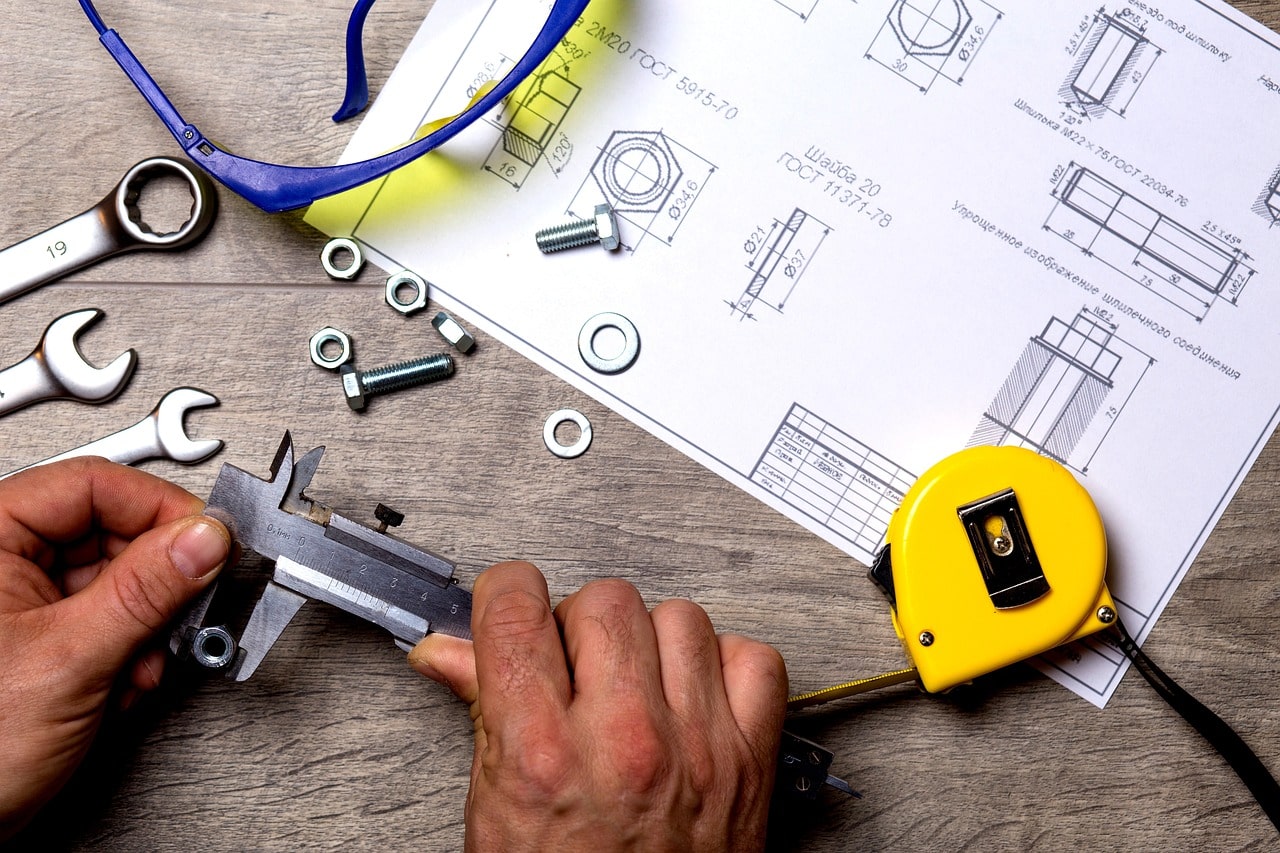In this post we explore using precise measurements and modern tech to boost accuracy, efficiency, and save money.
The following is a guest post from my bloggy friends over at Metrology Parts. Interested in having a guest post on my website? Click here for my guest post submission form.
From Blueprint to Reality: Maximizing Home Improvement Success with Technology
Metrology, the science of measurement, is essential because progress in developing, designing, and manufacturing can be measured by measuring. Metrology comes from the Greek metro (measurement) and logy (study). Historically, our opposable thumbs, forearms, and stride helped measure and were used to gauge length units, while beans, seeds, and grains were a weight measurement system!
Today, metrology is a universally followed means of measuring units that immensely impact everyday activities, from manufacturing to medicine to home construction. It involves practical and theoretical characteristics of measuring and delivering the proper measurement methods across various industries with accuracy and reliability.
Here’s where agreed-upon units of measurement come in: metrology is like a shared language for measuring used to achieve uniformity and order. It’s vital for specifying quality standards and measurements. And that measurements are consistent across industries, languages, or cultural differences.
Home Renovation
Home renovations can be challenging. One significant concern people often need help with is the exacting nature of taking correct measurements. Design measurements must be exact for a proper fit. You’ll notice if that door is off by an inch. Many architectural elements, such as countertops, staircases, glass installations, and wall coverings, are custom-made in various shapes and sizes.
Technology
Technology has changed the way professionals and DIY weekend warrior carpenters take measurements. Many use photogrammetry, a camera, and photographs to create an area or object model.
Photogrammetry takes measurements based on photographs. Multiple photographs of a specific location can form an accurate model used as a 2D or 3D CAD drawing during renovations. PhotoModeler software technology is readily available for pros working on renovations. These models are used after measurements and photos from multiple angles and locations for study and planning.
Consider using the latest photogrammetry software; it’s a great benefit. It’s more affordable than many might assume. It’s one of the most cost-effective ways for pros to measure, especially with monthly subscriptions, so let this assuage any fears about hiring a professional; accurate measurements count and help keep costs down.
Photogrammetry can also be done using a basic camera setup for those with the time, aptitude, camera, and desire to take on their home improvement projects.
Photogrammetry for Kitchens and Baths
Kitchens and baths experience the most usage and wear and tear, requiring more frequent renovations. These renovations can be challenging, including taking measurements. Since many countertops, cabinets, and doors are custom-made, each has to be measured carefully for the correct dimensions of the walls, porcelain appliances, doors, windows, outlets, and other elements.
Photogrammetry for Stairs
Stairs, installing a new handrail, or making additions to the staircase are among some of the most complex parts of the house to measure. Photogrammetry is an excellent aid in measuring stairs, no matter how complicated the staircase.
Photogrammetry for Structure
The roof is one of the largest areas of your house that needs measurements. Even roofs with a typical shape, the size of the area, and the height can make this difficult. Happily, photogrammetry lets you obtain measurements without climbing onto the roof, and pros routinely use drones and ground shots to take aerial photos of roofs and measurements.
Photogrammetry for Windows
Most homes typically have basic, rectangular windows. And then, there are your unique windows. Measuring circular windows can be challenging using traditional methods, or the windows might be in a difficult position. Photogrammetry can take measurements, and size and an awkward location are no problem. These measurements allow you to achieve perfectly sized window coverings and glazing.
Retrofit of Stairlifts
Home improvements and additions, like stairlifts, can make a house more accessible; however, the new stairlift needs to be measured perfectly.
Accurate Measurements
Let’s speak to accuracy. In many handicrafts, the human touch adds charm. However, in carpentry, the most minor errors can lead to costly mistakes and increased costs, which is why accurate measurements are invaluable. Be aware that mistakes are easy to make when using hand measurements.
Precise measurements increase efficiency during every part of the renovation process. Knowing the room’s dimensions is essential to understanding the space you’re working with. Remember to take appliances and built-in features into account.
How to Measure a Room - The Basics
Tools:
Measuring Tape / Tape measure / Measuring App
Drawing Paper
Pen / Pencil
Camera / Smartphone Camera
Start with an outline. Sketch out the basic shape of the room and sketch in the windows, doors, closets, and other elements. Fixed features include windows, doors, cabinets, shelves, nooks, and other built-ins. Here is your measurement map.
Measure wall-to-wall and make a note of each side of the wall - and if they differ, note that. Measure floor-to-ceiling, too. If there aren’t any other wall openings, measure walls to the outer trims of doors. Measure windows and doorways from outer trim to outer trim (not just the window opening or glass). Label and mark measurements for cabinets, cupboards, and closets, and note whether it’s a base or upper cabinet.
Visualizing space in square blocks can be helpful, with each block representing a square foot - length x width = square footage or area. Tip: Consider ordering 10 percent extra in flooring, tile, or backsplash for additional material in case of adjustments or breakage.
Measuring is an essential step in a home improvement project. It helps the designer, carpenter, or do-it-yourself homeowner visualize changes, ensure accurate renderings of designs, purchase supplies, plan labor, and reduce waste.
The Measure of Metrology
Proper measurements ensure everything fits, looks, and performs as you envision, and that’s the beauty and order of metrology.
Editor’s Note – How Metrology Can Save You Money
Metrology, the science of measurement, can significantly impact your wallet during home improvement projects. By ensuring precise measurements, you can avoid costly mistakes that often result from even minor errors. Accurate dimensions prevent waste of materials, reduce the need for adjustments or replacements, and increase overall efficiency in the renovation process. This precision is particularly crucial for custom elements like countertops, cabinets, and doors, where a small miscalculation can lead to expensive do-overs.
Moreover, leveraging modern metrology tools like photogrammetry can provide additional cost savings. These technologies offer more accurate measurements than traditional methods, especially in hard-to-reach areas like roofs. They can reduce labor time and costs, improve project planning, and enhance quality control. Whether you’re a DIY enthusiast or working with professionals, embracing metrological principles ensures your projects are completed efficiently and cost-effectively. Remember, investing in proper measurement techniques upfront can lead to significant savings throughout your home improvement journey.
Written by Taylor McKnight, Author for Metrology Parts






